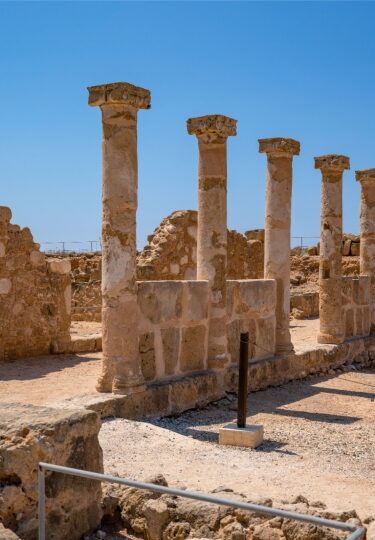Given the wonderful variety of history and natural wonders, you’ll never run out of things to do in Cyprus. Over the centuries, the island has been criss-crossed by visitors from ancient Greek civilizations to Venetians, Ottomans, and British, all of whom have left their mark. These days, Cyprus is better known as a vacation destination, particularly among northern Europeans who come here to enjoy the almost year-round sunshine, the countryside, and the famous Cypriot hospitality.
Whether you want to explore 1,800-year-old mosaics, hike through forests of ancient cedar, or feast on the island’s wonderful farm-to-table cuisine, you’ll easily find enough things to do in Cyprus to make you fall in love with Aphrodite’s island.
Explore Medieval Limassol
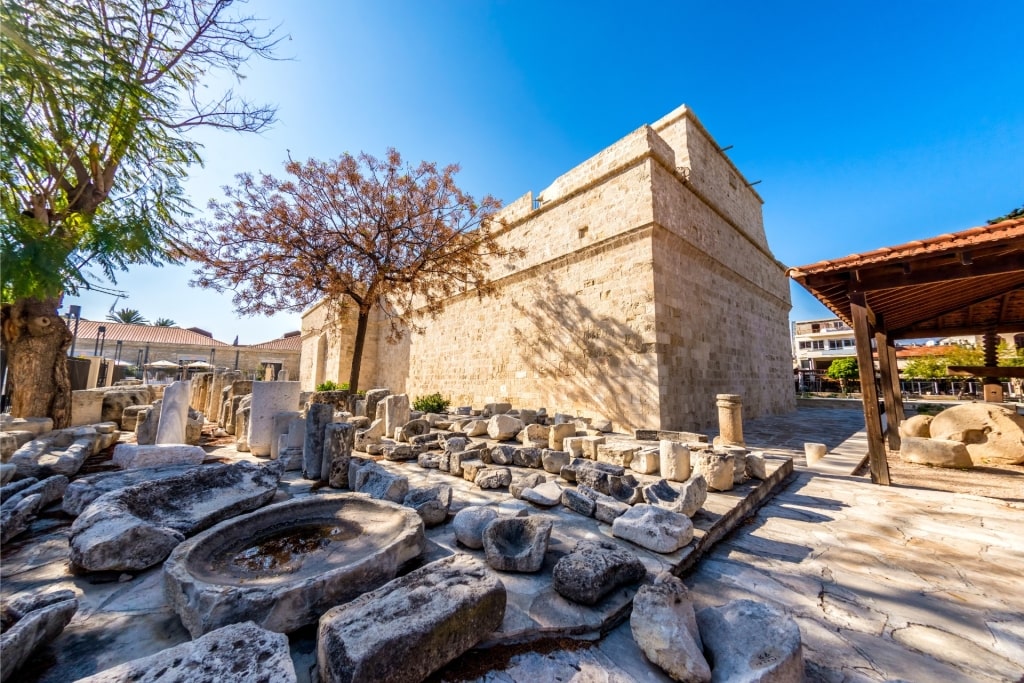
Limassol
Limassol is the principal port on the island’s south coast and a bustling vacation destination. As you wander the tangled streets of the historic center, it’s hard to imagine that this was once a sleepy fishing village.
Limassol Castle is the epicenter of the city’s medieval heart, located near the old port. In 1191, English King Richard the Lionheart wed Berengaria of Navarre, who became Queen of England. The iteration of the castle today was built by the Ottomans in 1590 and houses the Medieval Museum of Cyprus, a collection of medieval pottery, weapons, coins, and other artifacts.
The cluster of streets surrounding the castle is lined with everything from Greek Orthodox churches, rich in gold and ancient icons, to old Turkish baths and minarets of former mosques.
Right opposite the castle, a former carob mill has been converted into a complex of restaurants and bars. One of them, Karatello, is a wonderful place for a cold beer and a selection of sharing plates. You’ll have a chance to try the famous Cypriot cuisine, an enticing medley of dips, local meats and cheeses, and salads.
See Ancient Kourion
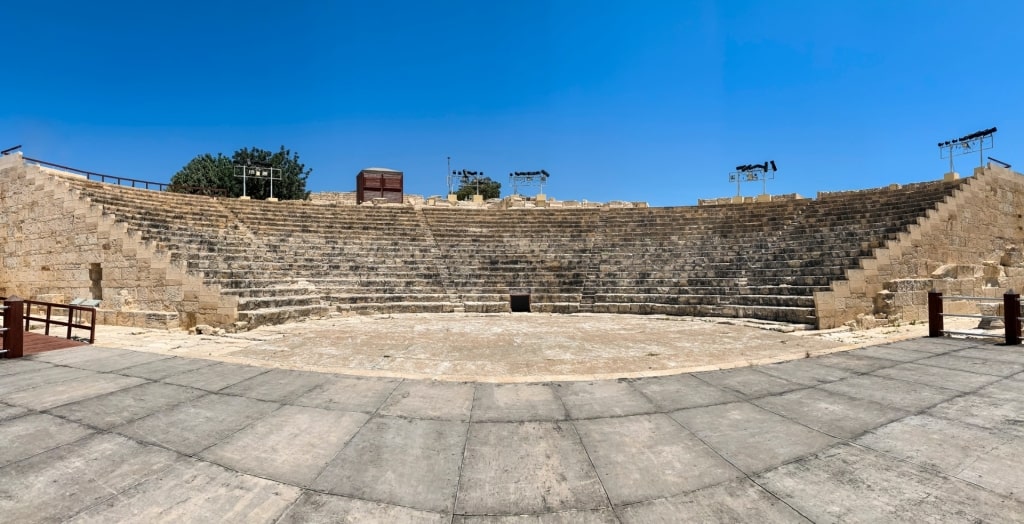
Kourion
One of the most beautiful Greco-Roman sites in Cyprus is Kourioun, an amphitheater built in the second century BC. It’s set high on a limestone cliff against a backdrop of the sparkling Mediterranean.
Kourion was a city-state in its own right. The amphitheater, located just outside Limassol, was used for gladiator fights, with an audience of 3,500.
Tragically, a violent earthquake in 365 AD destroyed the community, and the amphitheater lay buried until the 1930s. Today, it’s been restored to much of its former glory and makes a romantic setting for concerts and classical dance performances on a balmy summer evening.
Visit Omodos
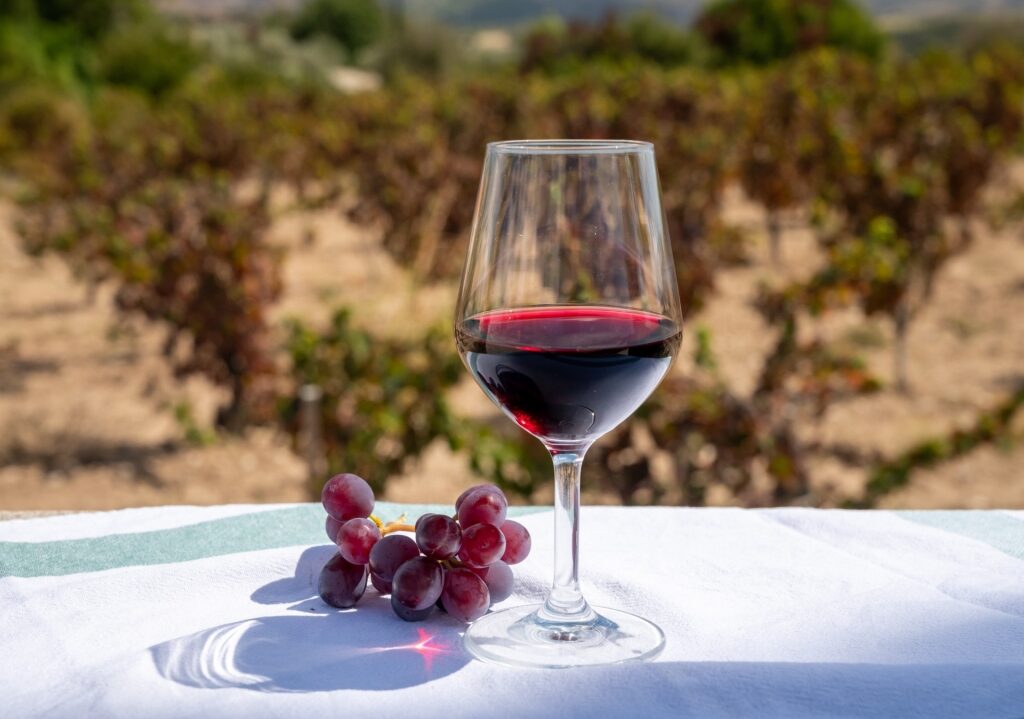
Wine
Cyprus produces some excellent wines, the grapes ripened on the sunny, south-facing slopes of the Troodos Mountains. The hills are dotted with villages, one of the prettiest of which is Omodos, the epicenter of the wine trade. More than 50 wineries are located in the Troodos region, so there’s no shortage of opportunities for a tasting.
Don’t miss the other sights of the village, which radiates around an attractive cobbled square. There’s a wine press dating back to the Middle Ages, as well as an array of valuable icons and intricate wood carvings in Timios Stavros, the Monastery of the Holy Cross.
If you’re interested in traditional lace, check out the Museum for the Preservation of Lace, where many of the pieces have been donated by the village women who keep this tradition alive.
Explore Nicosia
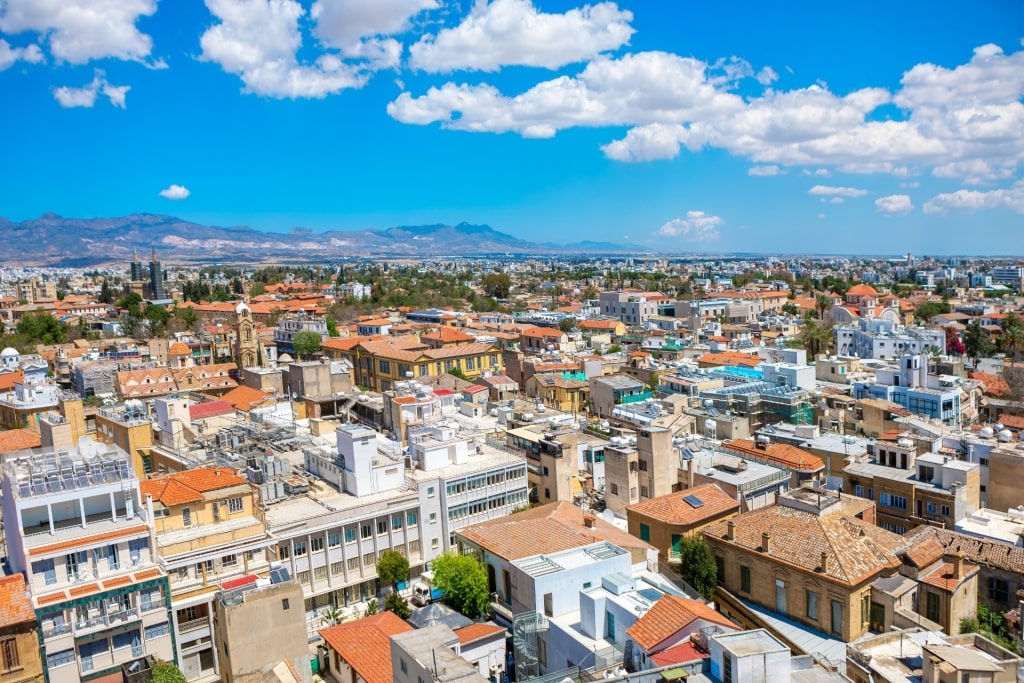
Nicosia
Nicosia, or Lefkosia, is the capital of Cyprus, located about an hour and 20 minutes’ drive inland from Limassol. If you’re visiting in the shoulder or low seasons, it’s worth a day trip for its exciting cultural and culinary scene.
Venetian walls dating back to the 16th century encircle the old part of the city, enclosing impressive museums and churches. Visit the Cathedral of St. John, built in 1662. It houses dazzling frescoes and priceless icons, the walls painted with beautiful biblical scenes.
Spend time in the Archaeological Museum, a treasure trove of art and antiquities dating right back to the Neolithic age. Wander the tangle of pedestrian streets of Laiki Yitonia, where tavernas with vine-shaded gardens beckon, offering delicious Cypriot cuisine.
Cross the Green Line
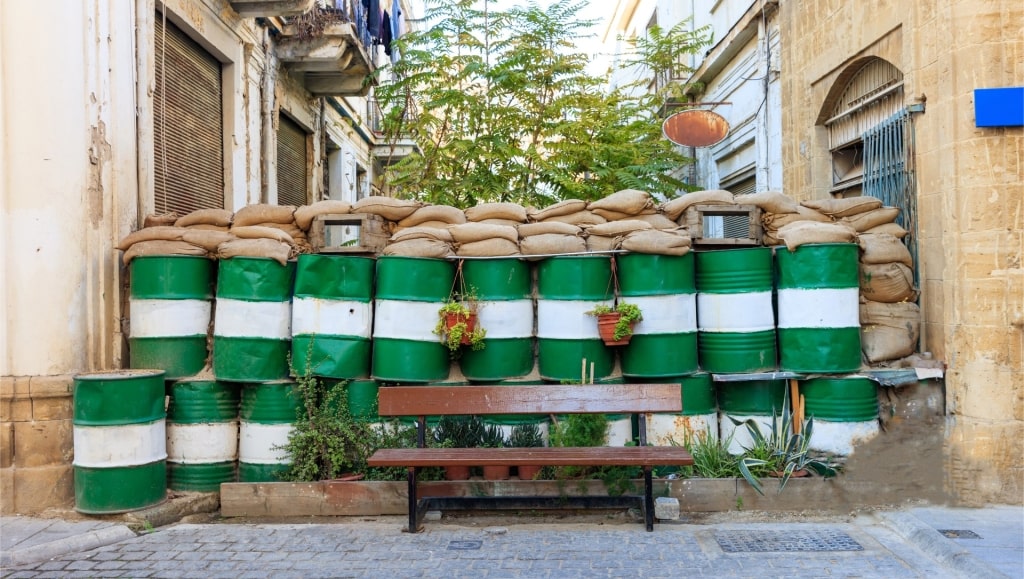
Green Line
The northern part of Cyprus has been under Turkish occupation since 1974, and Nicosia is Europe’s only divided capital. The Turkish occupied side is separated from the Greek Cypriot side by a demilitarized, UN-managed buffer zone, the “Green Line”. Only Turkey recognizes the Turkish Republic of Northern Cyprus.
The two different cultures, Greek and Turkish, are brought home by the scenes either side of the buffer zone. On the Greek side, you’ll see Orthodox churches, elegant shops, and modern office blocks, while on the Turkish side, the sky is pierced by minarets, the old Ottoman architecture is much more rustic, and the bars sell Turkish beer. The “line” itself is an eerie no-man’s land of abandoned houses, sandbags, and security checkpoints.
You can cross over on Ledra Street, but you will need your passport. It’s perfectly safe; both Cypriots and Turks, as well as a wide spectrum of tourists, cross back and forth every day. But take time to look at the various memorials to those who lost their lives in the conflict, which 50 years on, is still not resolved.
Wander Around Kolossi Castle
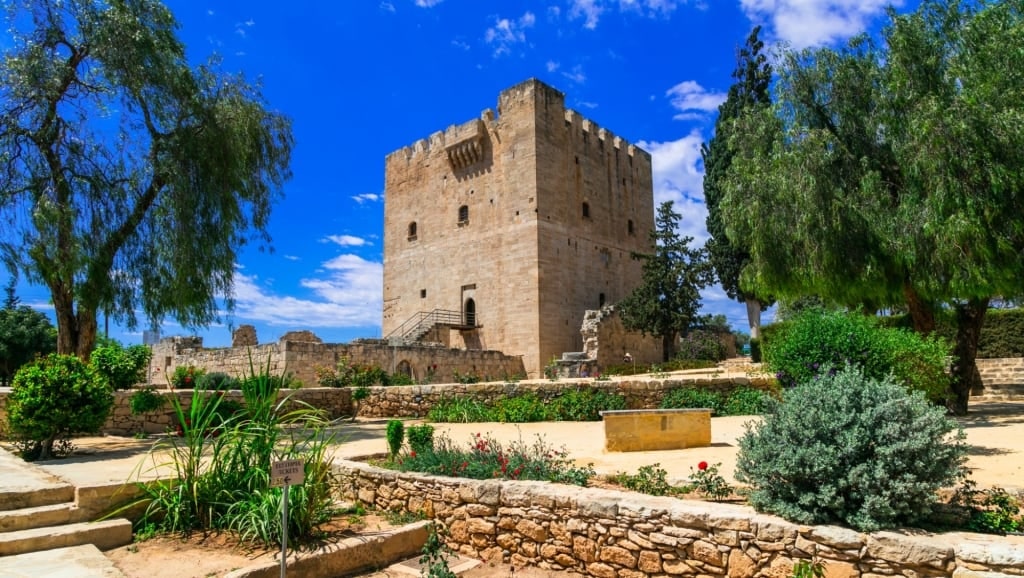
Kolossi Castle
A little to the west of Limassol is Kolossi Castle, built as the Grand Commandery of the Knights of the Order of St. John of Jerusalem in the 13th century. Later, the medieval castle served as the island HQ of the Knights Templar. The imposing, albeit empty structure that you see today dates back to the 15th century. The remains of a 14th century sugar mill lie nearby.
The Knights produced a dessert wine here called Commandaria, which is still made today and is one of the oldest named wines in the world. You may be offered a sample, but the sweet wine is an acquired taste to many.
Hike the Caledonia Trail
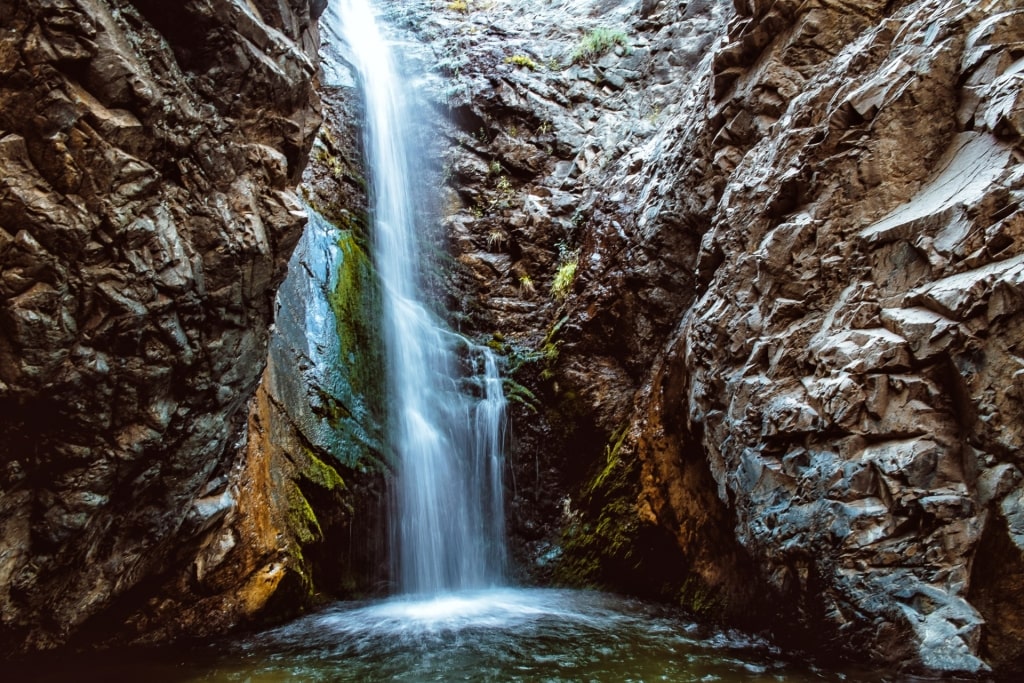
Caledonia Trail
The Troodos Mountains, which form a spine along this beautiful island, are criss-crossed with scenic hiking trails, which are a wonderful way to commune with nature.
One of the best things to do in Cyprus for lovers of the outdoors is to hike the Caledonia Trail. This one-way hike downhill traces the path of the Kryos Potamos, which means “Cold River”, a clue as to what awaits. The trail ends at Caledonia Falls, where the river cascades 43 feet over a small cliff into a sun-dappled pool, a welcome opportunity to cool off on a hot day.
What’s fun about the trail is that it switches back and forth across the river, so the hike involves negotiating a few sets of stepping stones. Wear sturdy shoes, and if you want to swim, bring your swimwear and a towel.
Get Steamy in a Traditional Hamam
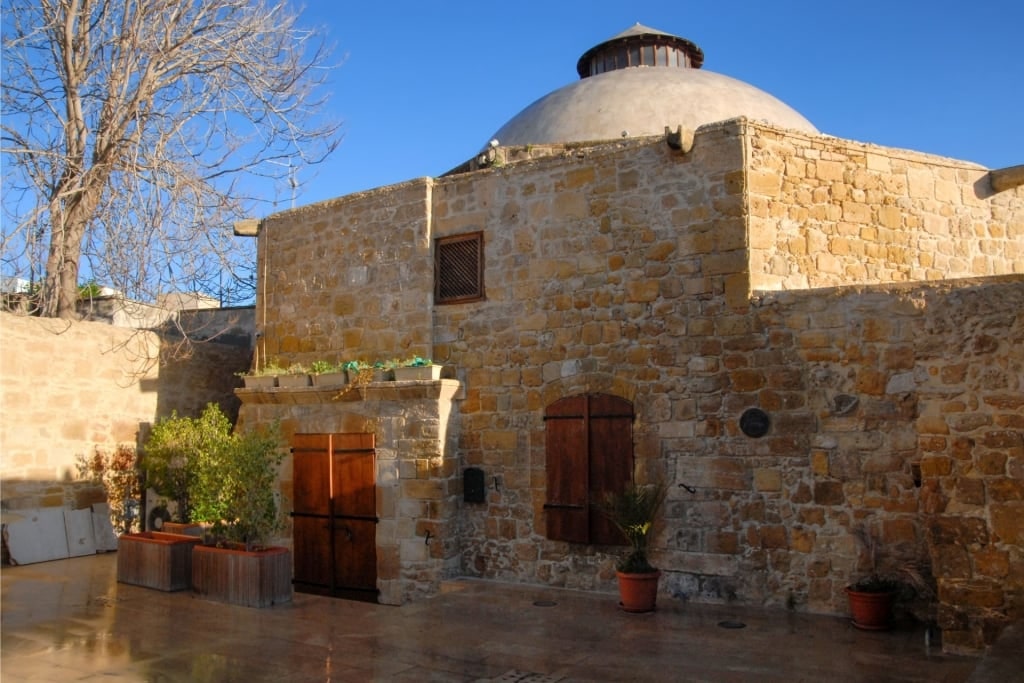
Hamam
Make time for a little spa indulgence at the gorgeous Omerye Hamam, close to the Archbishop’s Palace in Nicosia. The hamam, or Turkish bath, was built in the 16th century and has been sensitively restored to its former glory.
Essentially, a hamam is the original day spa. Omerye offers the full Turkish bath experience, with tepid, warm, and hot steam rooms, complete with massages using local olive oil and honey, as well as wraps and peels.
Men and women bathe separately. It’s a wonderfully authentic experience and will leave you feeling scrubbed and renewed.
Go Off-Road on a Jeep Safari
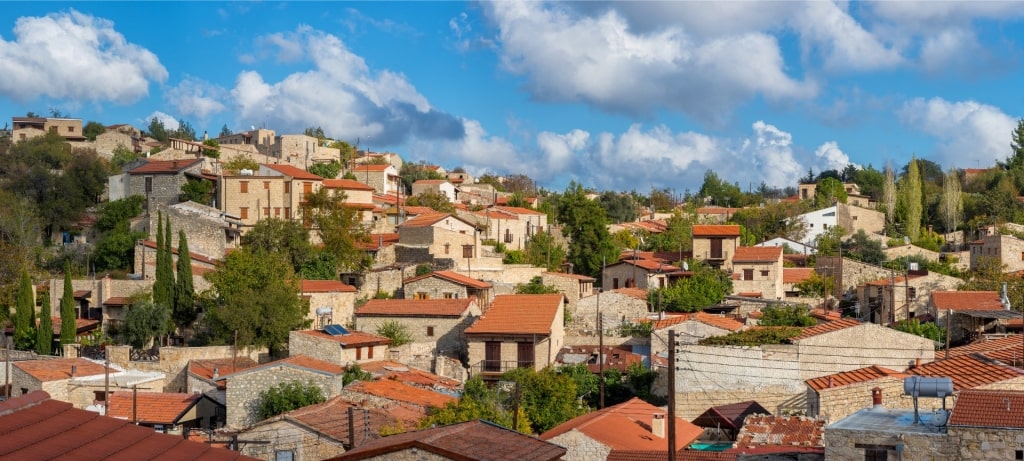
Lofou
Away from the developed coastline, the interior of Cyprus is jaw-droppingly beautiful. The Troodos mountains are rugged and forested, while the foothills are green with vineyards and dotted with tiny wine-growing villages.
Take it all in on a 4×4 safari that explores some of this scenery, taking you off road and along narrow country lanes. You’ll see Kouris Dam, which has created a vast lake in the hills, and the pretty village of Lofou, a cluster of old, stone-built houses and cobblestone streets surrounded by vines and almond groves.
Travel in February and there’s an added bonus: the countryside is a sea of pinky-white, as the almond trees are in blossom.
Discover the Myth of Aphrodite
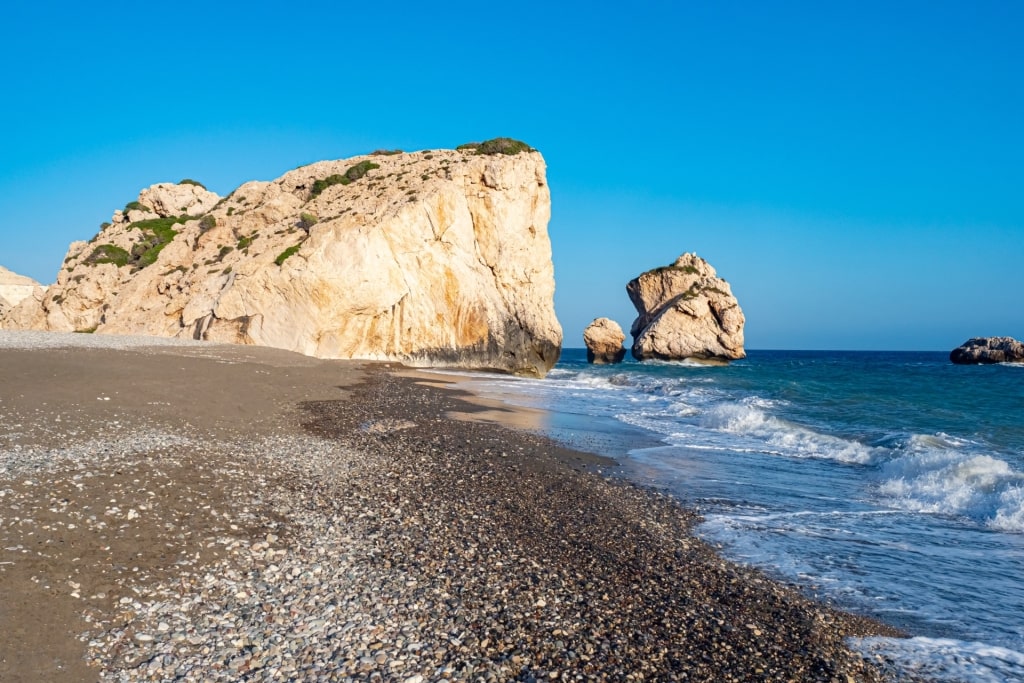
Rock of Aphrodite
One of Europe’s best attractions, the Rock of Aphrodite, or Petra Tou Romiou, lies on the coast between Paphos and Limassol.
This vast limestone sea stack sits at one end of one of Cyprus’s best beaches, pounded by waves. As legend has it, the goddess Aphrodite was born here, emerging from the sea foam and arriving at the beach on a shell. If you’ve been to the Uffizi Gallery in Florence, you will recognize the scene, immortalized in Boticelli’s masterpiece, The Birth of Venus.
It’s said that certain weather conditions give rise to a column of sea spray that could resemble a human form. There’s also a local belief that swimming around the rock three times will imbue you with eternal youth, beauty, and love.
The name of the rock actually stems from a later period, when, according to another legend, the Greek Christian hero Basil tossed the mighty rocks into the sea to fend off invading Saracens. “Petra tou Romiou” means “the rock of the Greek”, in his honor.
Feast on Mezze
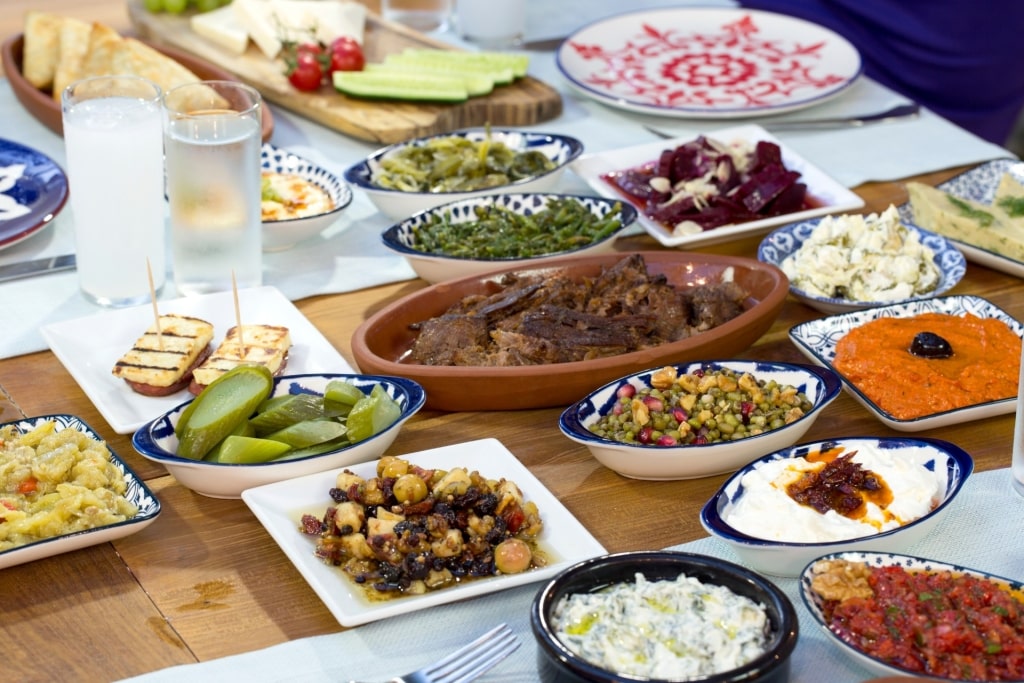
Mezze
The mezzes, or family-style meals in Cyprus are epic and designed to be enjoyed slowly. This is not fast food, and a good mezze will often fill an entire afternoon. You need to pace yourself, too, as more dishes keep on coming. You’ll find mezze on offer everywhere; in cities, on the beaches, and in every village taverna.
First, there will be dips, from hummus to tzatziki and taramasalata, with pita bread warm from the oven. A large Greek salad of cucumber, tomatoes, olives, and salty feta cheese will appear. Next, hot dishes arrive, from grilled halloumi to meatballs and stuffed vegetables. Then mains, which might be a rich moussaka, or a souvlaki kebab with a squeeze of lemon and a side of fries.
Dessert is usually a fruit platter, mercifully, but many chefs will also bring filo pastries filled with cheese and honey as a finale, just as you think you can’t eat another thing.
Explore the Tombs of the Kings
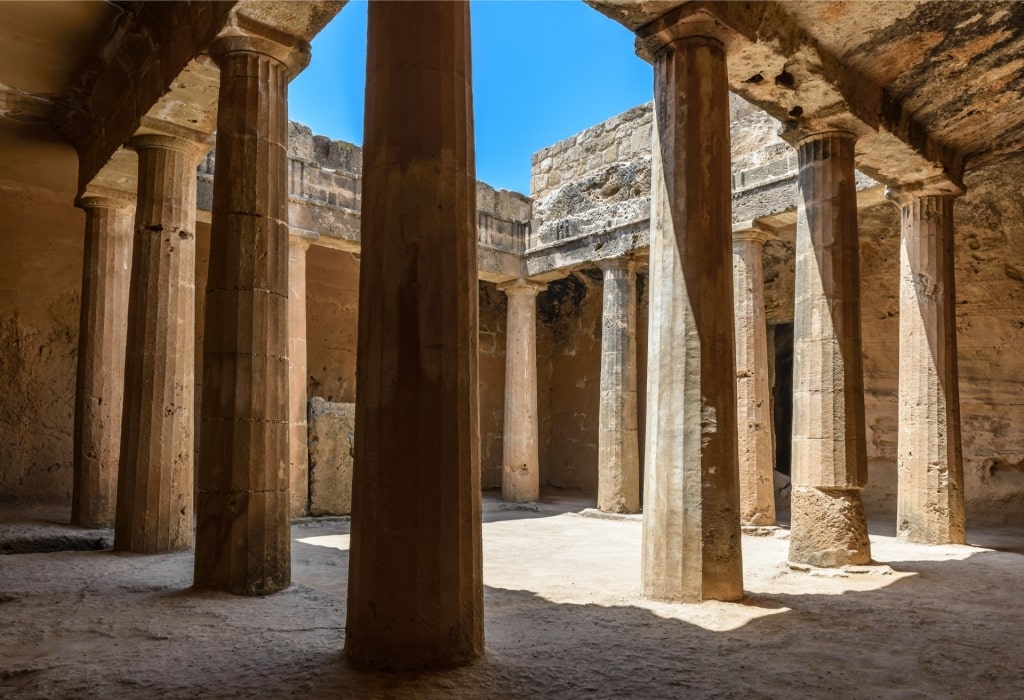
Tombs of the Kings
One of the main reasons to visit Paphos, on the western end of this remote island, is to explore the Kato Paphos Archaeological Park, a UNESCO Site that spreads across a breezy promontory near Paphos Harbour.
The Tombs of the Kings is a misnomer as this vast sandstone necropolis, constructed in the third century BC, actually served as the burial chambers of high-ranking officials and aristocrats rather than royalty.
The tombs are enormous, decorated with fine Doric pillars, some of the caverns resembling the layout of the homes of the living. Similar tombs have been found in Alexandria, Egypt, across the Mediterranean Sea.
Admire Ancient Mosaics
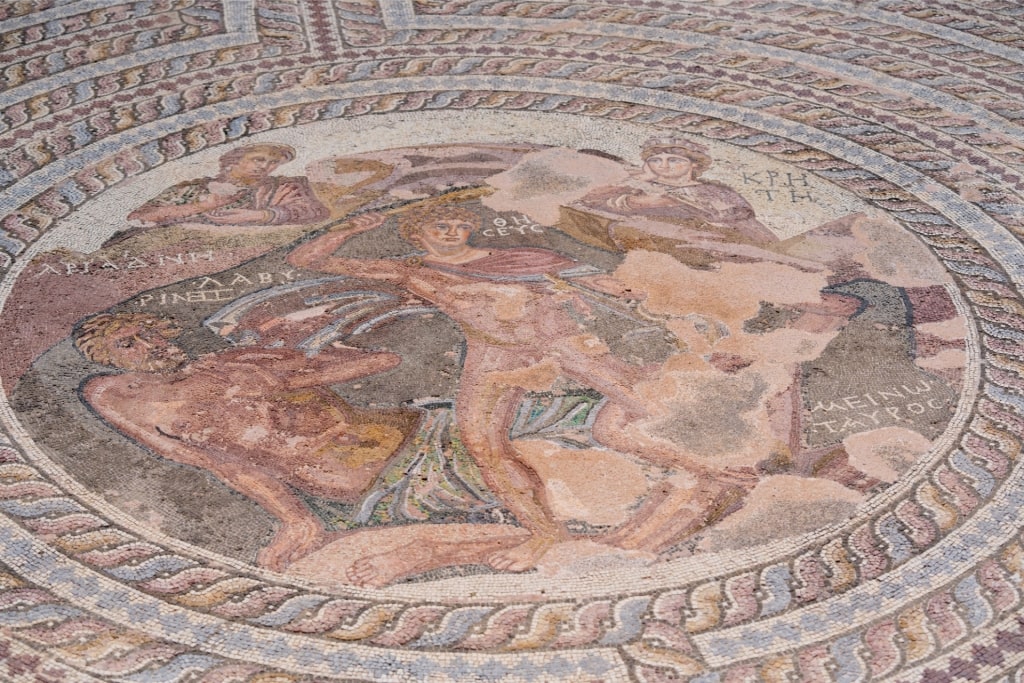
Paphos Mosaics
Close to the Tombs of the Kings and also part of the Paphos Archaeological Park are Cyprus’ famous mosaics, adorning the floors of four noblemen’s villas dating back to the second century AD. The mosaics were discovered in 1962 by a farmer plowing his land.
The mosaics are astonishingly well preserved, depicting detailed scenes from Greek mythology. You’ll see hunting images, a representation of Scylla, a mythical sea monster, scenes from Theseus and the Minotaur, and in the House of Aion, detailed panels showing pictures of Dionysos, the god of wine, Cassiopeia, and Apollon.
After your visit, wander down to the Ottoman castle that guards the harbor. There’s nothing inside, but you can climb to the top for wonderful views across the water and the town.
Take a Scenic Catamaran Cruise
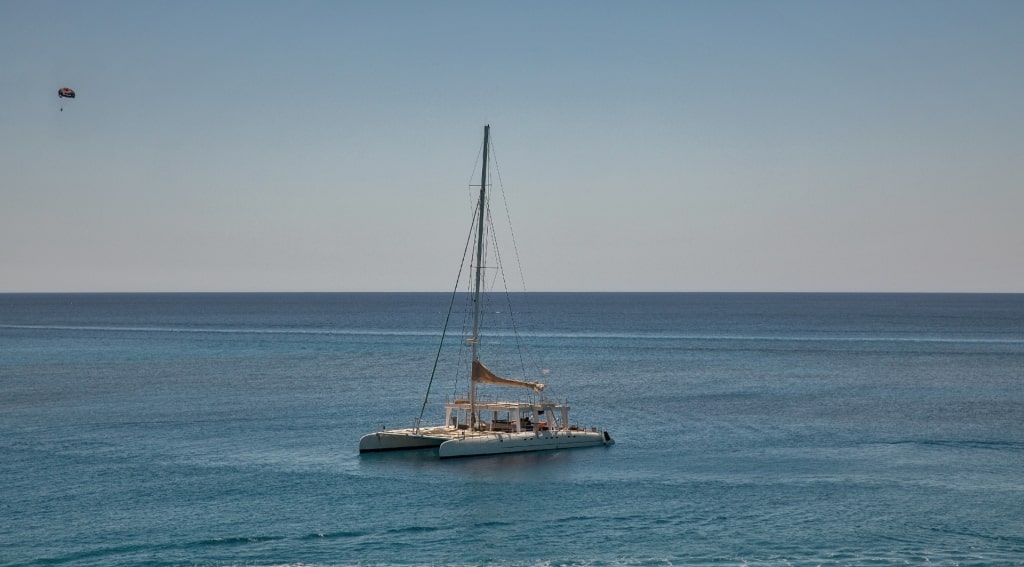
Catamaran
Beyond the urban sprawl of Limassol, the built up area gives way to long, sandy beaches and tall cliffs that plunge into the sparkling Mediterranean. One of the best ways to enjoy this scenery is on a catamaran cruise, departing from Limassol’s harbor and stopping to swim off the expanse of Lady’s Mile Beach.
Boats have a swim ladder for easy access to the warm water if you don’t want to dive in. Splash around, take in the views, or simply relax on board in the sunshine.
Gaze at Gold in Kykkos Monastery
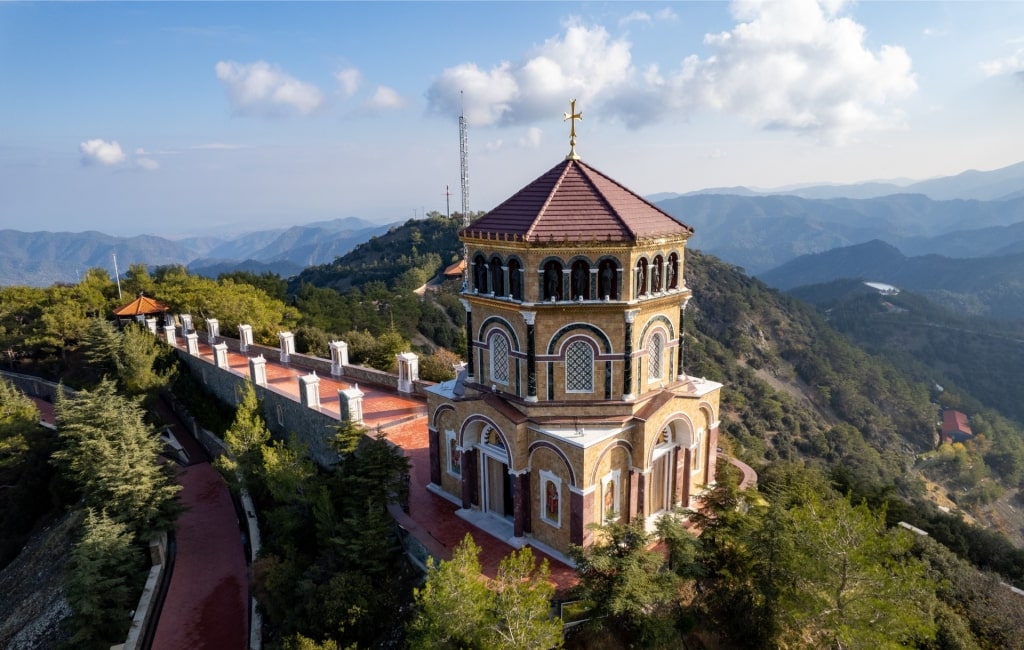
Kykkos Monastery
The church in Cyprus holds great wealth, and this is no more apparent than in the monasteries dotted across the Troodos Mountains. If you visit just one monastery, make it Kykkos, located in the Marathasa Valley.
From the outside, the monastery looks relatively austere. But step inside and your jaw will drop at the gleaming gold and silver riches that festoon every space. Pilgrims come here to gaze at a priceless icon of the Virgin Mary, a sacred relic housed in a mother-of-pearl shrine.
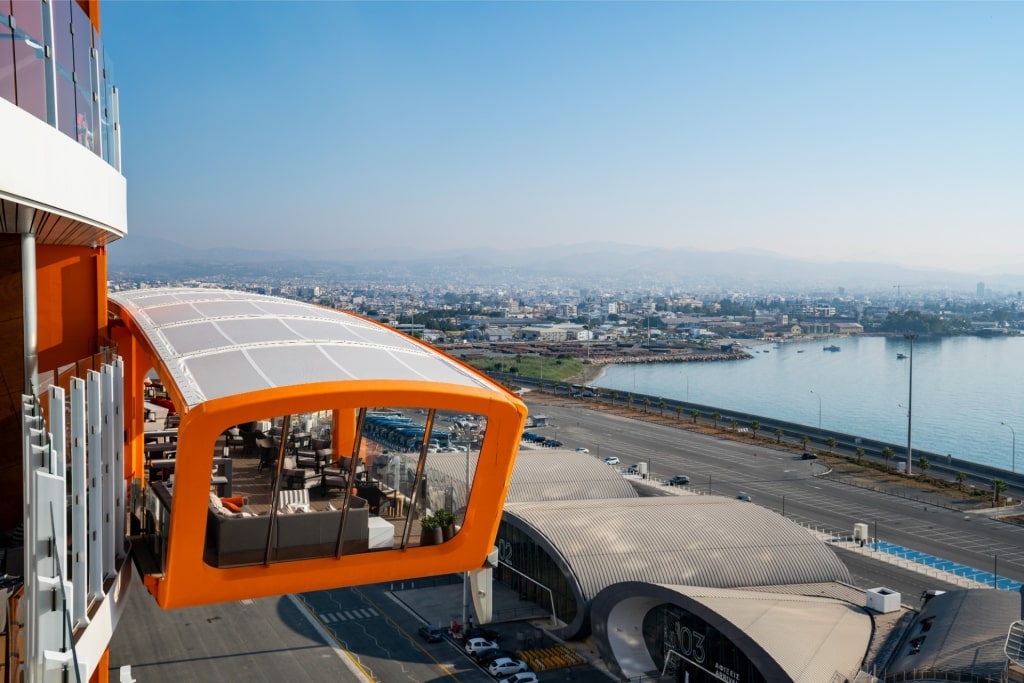
Limassol
Are you ready to discover the beauty of Aphrodite’s island? Browse Celebrity’s cruises to Cyprus and plan your own Mediterranean odyssey.
